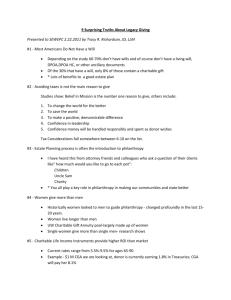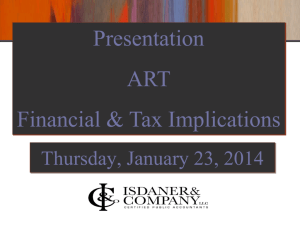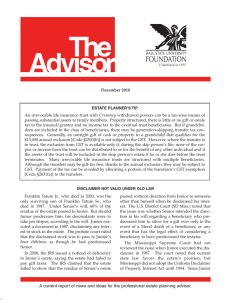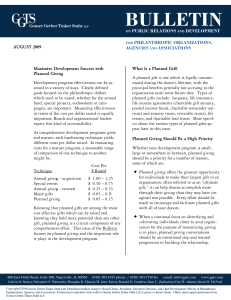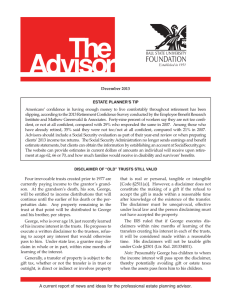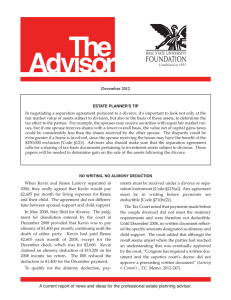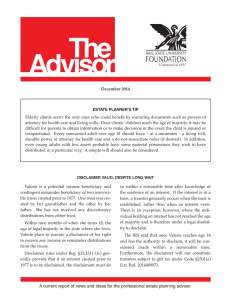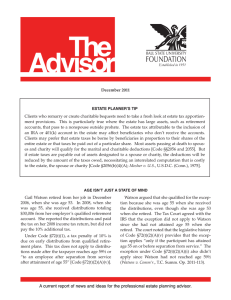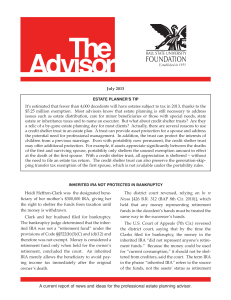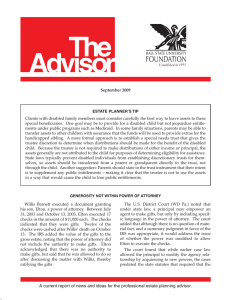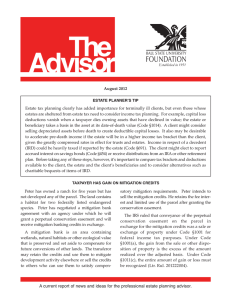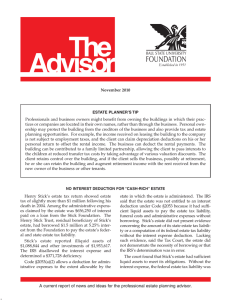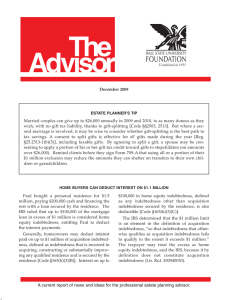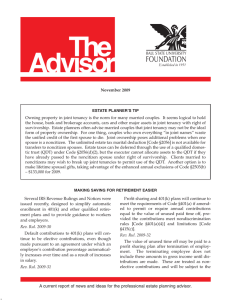Planned Giving Vehicles and more…
advertisement
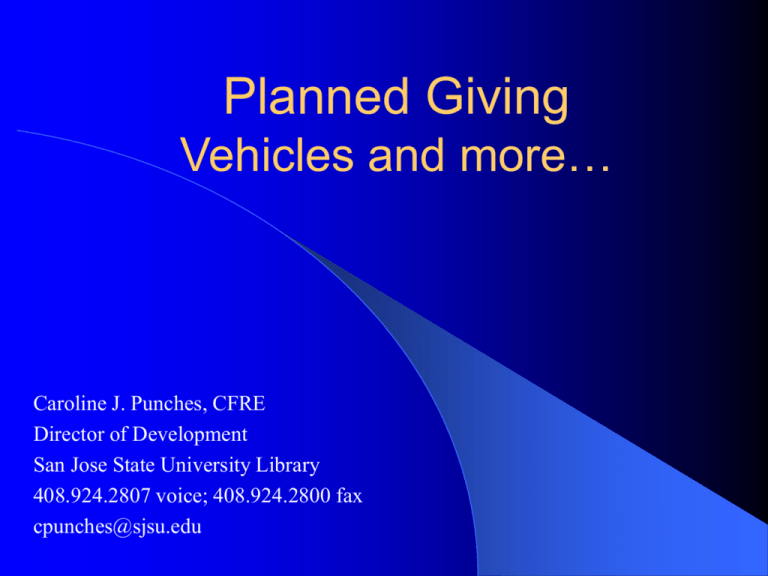
Planned Giving Vehicles and more… Caroline J. Punches, CFRE Director of Development San Jose State University Library 408.924.2807 voice; 408.924.2800 fax cpunches@sjsu.edu What is Planned Giving? “Planned giving is the integration of sound personal, financial, and estate planning concepts with the individual donor’s plan for lifetime or testamentary giving.” - AFP Glossary Donor-centered fundraising Gifts to be received “later” Four Classes of Vehicles Give it outright Give it later (after donor is deceased) Give the asset now, keep the income Give the income now, keep the asset Planned Giving Prospects Age 55 or older Long-time member/supporter Few or no dependents Unusual generosity for OUR work Appreciated assets Cash Gifts Appropriate for: Everyone Tax Treatment: Fully deductible for itemizers (up to 50% of adjusted gross income). Excess may be carried forward for five additional years. Potential Issues: Certain high-income taxpayers may have this deduction phased out. Appreciated Assets Appropriate for: People with high appreciated securities, real estate or closely held stock. Tax Treatment: Full fair market value of asset is deductible (up to 30% of adjusted gross income). Excess can be carried forward five more years. No capital gains tax paid on appreciation. Potential Issues: Gift MUST be made to charity prior to sale of asset. Other Non Cash Gifts Appropriate for: People wishing to donate real and personal property. Tax Treatment: Fully deductible up to appraised value (form 8283 filed with return). Items valued at over $5000 MUST have an independent appraisal. Potential Issues: If asset is sold within two years of receipt by institution, form 8282 must be filed. Potential problem for donor if sold under appraised value. Bequests Appropriate for: Anyone with a will or trust Tax Treatment: Gifts identified are excluded from federal estate and state inheritance taxes. Potential Issues: Recipients MUST be qualified charities and gifts fully discernable. Charitable Gift Annuities Appropriate for: Older individuals wishing “higher rate” of return on investments. Tax Treatment: Current charitable deduction received for portion of gift based on life expectancy of donor. No capital gain on transfer of assets. Potential Issues: Gifted asset value must be segregated. Tax free income ends when donor attains life expectancy. Pooled Income Funds Appropriate for: Individuals wanting “higher rate” of return on investments but do not have the assets required for a CGA. Tax Treatment: Current income tax deduction received for portion of gift based on life expectancy of donor. No capital gain on transfer of assets. Potential Issues: Limitations on investment opportunities. Life Insurance Appropriate for: People with existing policies which are no longer required to meet planning needs OR people wishing to take out a new policy which will result in a significant gift at death. Tax Treatment: Current deductions provided for “cash surrender value” of existing policies or premium payments for new policies. Potential Issues: Make sure state recognizes “charity” as “insurable interest.” Charitable Remainder Trusts Appropriate for: Individuals with large taxable estates wishing to preserve an income stream to someone for life or term of years with remainder of trust passing to organization. Tax Treatment: Charitable deduction based on term of the life interest AND percentage passing to income beneficiaries. Potential Issues: Trusts are considered separate taxpayers and must be managed and invested individually. Charitable Lead Trusts Appropriate for: Individuals who want their estate to go to heirs but want to support their charitable organization with annual income. Tax Treatment: Charitable deduction based on number of years payments are made to organization and whether trust reverts back to donor. Potential Issues: Trusts are considered separate taxpayers and must be managed and invested individually. Tax Deferred or Retirement Assets Appropriate for: Individuals with IRA’s, Keoghs, pension plans, annuities, etc. Tax Treatment: Gift is excluded from estate, inheritance and deferred income tax liabilities. Potential Issues: Favorable tax treatment is available ONLY in an estate. Many people are unaware that the combination of taxes on tax deferred assets may easily exceed 70% Donor Motivations for Making Planned Gifts To help provide future funding for organization Ability to restrict funds Recognition for a loved one When Donors Consider Making Planned Gifts Personal timing/circumstances determine need Need to create a valid will Need to review and revise a will Death of a spouse Choosing executor, trustee and guardian Need for estate liquidity Health Value of old policies no longer needed What to do when the Prospect says… I need all the income my assets produce to live on I can’t give away capital assets; I intent to pass them on to my children and grandchildren I must put my kids through college! Your institution is not my only charity I need all my income. Most of my assets are nonincome producing real estate so I am cash poor. Or when s/he says… I hesitate to part with any assets; I worry about a long term illness and having enough to take care of myself. Our oriental rug collection is our pride and joy, but our children don’t want the hassle of caring for them and insuring them. This year’s been very bad for me; my tax situation is awful and I am going to owe a huge capital gains tax. Maybe some other year.


